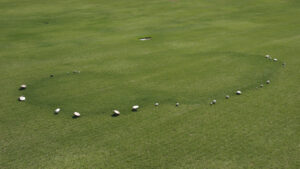Mushrooms in My Yard: Why That’s Good News
go.ncsu.edu/readext?1098492
en Español / em Português
El inglés es el idioma de control de esta página. En la medida en que haya algún conflicto entre la traducción al inglés y la traducción, el inglés prevalece.
Al hacer clic en el enlace de traducción se activa un servicio de traducción gratuito para convertir la página al español. Al igual que con cualquier traducción por Internet, la conversión no es sensible al contexto y puede que no traduzca el texto en su significado original. NC State Extension no garantiza la exactitud del texto traducido. Por favor, tenga en cuenta que algunas aplicaciones y/o servicios pueden no funcionar como se espera cuando se traducen.
Português
Inglês é o idioma de controle desta página. Na medida que haja algum conflito entre o texto original em Inglês e a tradução, o Inglês prevalece.
Ao clicar no link de tradução, um serviço gratuito de tradução será ativado para converter a página para o Português. Como em qualquer tradução pela internet, a conversão não é sensivel ao contexto e pode não ocorrer a tradução para o significado orginal. O serviço de Extensão da Carolina do Norte (NC State Extension) não garante a exatidão do texto traduzido. Por favor, observe que algumas funções ou serviços podem não funcionar como esperado após a tradução.
English
English is the controlling language of this page. To the extent there is any conflict between the English text and the translation, English controls.
Clicking on the translation link activates a free translation service to convert the page to Spanish. As with any Internet translation, the conversion is not context-sensitive and may not translate the text to its original meaning. NC State Extension does not guarantee the accuracy of the translated text. Please note that some applications and/or services may not function as expected when translated.
Collapse ▲At last, autumn has arrived and the warm coastal air is starting to cool. The rain and humidity have stuck around for now, which means mushrooms and other fungi are likely to extend their stay. Mushrooms often raise much concern to homeowners when they first make their appearance in a lawn; however, I am here to tell you there is nothing to fear.
 Believe it or not, fungi are more closely related to animals than they are to plants. Unlike plants, fungi do not have the ability to use sunlight to create a source of food. They are considered “heterotrophic,” so they rely on feeding to gain their energy, much like us humans. The above-ground portion of a fungus is called a “fruiting body” and is typically referred to as a “mushroom.” The name “fruiting body” hints at its ability to create spores to reproduce. Fungi are a natural part of the food web and, in fact, they perform one of the most elaborate and essential ecosystem services of all: nutrient recycling.
Believe it or not, fungi are more closely related to animals than they are to plants. Unlike plants, fungi do not have the ability to use sunlight to create a source of food. They are considered “heterotrophic,” so they rely on feeding to gain their energy, much like us humans. The above-ground portion of a fungus is called a “fruiting body” and is typically referred to as a “mushroom.” The name “fruiting body” hints at its ability to create spores to reproduce. Fungi are a natural part of the food web and, in fact, they perform one of the most elaborate and essential ecosystem services of all: nutrient recycling.
Mushrooms typically emerge after a rain event due to their reliance on water for spore germination and breaking down organic matter. Organic matter, like fallen leaves and branches, is bursting with nutrients like nitrogen, phosphorus, and potassium, all of which plants need to develop healthy shoots and roots. These nutrients slowly leach over time depending on environmental conditions, but with the help of fungi, they are able to release more readily. The entire process is quite magnificent!

You may also notice mushrooms popping up in a near perfect circle; this is called a fairy ring, named for its almost magical look. As the underground mycelium expands outward in all directions, it releases nutrients along the edge, which is why you might see a ring of darker green grass with mushrooms around the perimeter.
While many mushrooms are harmless, some fungi can cause plant diseases. For those situations, remember that fungicides are preventative, not curative. Fungicides typically inhibit spore germination and must be applied before the fruiting bodies emerge.
The next time you see a mushroom appear in your yard, instead of jumping to remove them, remember that they are silently providing an ecosystem service and returning nutrients back to the soil.
Gabriella de Souza serves as the Consumer Horticulture Agent at the N.C. Cooperative Extension, New Hanover County Center and Arboretum, located at 6206 Oleander Drive. For more information about fungi and other plant topics, contact her at gadesouz@ncsu.edu or 910-798-7600.




